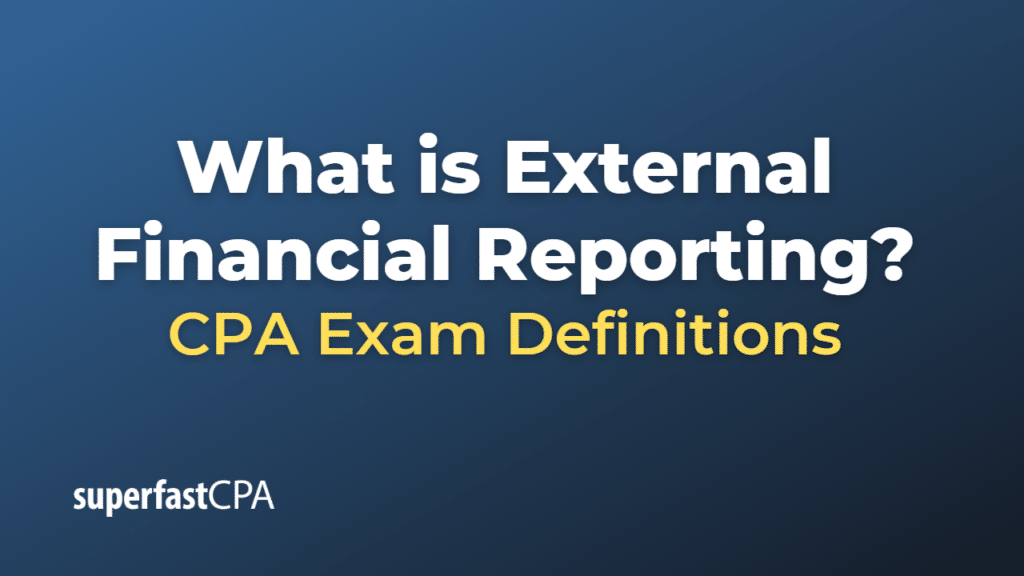External Financial Reporting
External financial reporting refers to the process of disclosing financial information and other relevant data about a business entity to individuals and organizations outside of the company. The objective is to provide accurate and transparent information about the company’s financial performance and position to those who have a stake or potential interest in the business but do not have access to its internal records.
The main components of external financial reports typically include:
- Balance Sheet (Statement of Financial Position): Shows a company’s assets, liabilities, and equity at a specific point in time.
- Income Statement (Statement of Profit and Loss): Presents revenues, costs, and expenses, and ultimately the profit or loss made by the company over a specific period.
- Cash Flow Statement: Reports the cash generated and used in operating, investing, and financing activities over a period.
- Statement of Changes in Equity: Shows the changes in the company’s equity components, such as share capital, retained earnings, and other reserves, during the accounting period.
- Notes to Financial Statements: Provide additional information and context about the data in the financial statements, including details about accounting policies, significant estimates, contingent liabilities, and breakdowns of certain financial statement items.
These external reports must comply with standardized accounting principles, such as the Generally Accepted Accounting Principles (GAAP) in the U.S. or International Financial Reporting Standards (IFRS) in many other countries. Compliance with these standards ensures that the financial information is consistent, reliable, and comparable across different companies.
The primary users of external financial reports include shareholders, potential investors, creditors, analysts, regulators, and competitors. They use these reports to make decisions, such as whether to invest in or lend to the company, assess the company’s financial health and performance, or compare it to other companies in the same industry.
Example of External Financial Reporting
Let’s consider a hypothetical public company, “TechPlus Inc.”, a technology firm traded on the New York Stock Exchange.
As a publicly traded company, TechPlus Inc. is required to prepare and publish external financial reports periodically. These reports are usually issued on a quarterly and annual basis.
For the annual report at the end of the fiscal year 2023, the external financial reporting would include:
- Balance Sheet: TechPlus Inc. would present a summary of its assets (cash, accounts receivable, inventory, property, plant and equipment, etc.), liabilities (accounts payable, accrued expenses, long-term debt, etc.), and shareholders’ equity (common stock, retained earnings, etc.) as of December 31, 2023.
- Income Statement : This would show TechPlus Inc.’s revenue from sales of its technology products and services, costs associated with producing those products (cost of goods sold), operating expenses, interest expense, taxes, and finally, its net income for the fiscal year 2023.
- Cash Flow Statement: This statement would show the cash inflows and outflows from TechPlus Inc.’s operating activities (like cash received from customers and cash paid to suppliers), investing activities (cash used for purchasing equipment or received from selling assets), and financing activities (cash received from issuing stock or paid for dividends) for the year 2023.
- Statement of Changes in Equity: TechPlus Inc. would detail changes in its equity components, such as issuing new common stock, buying back stock, the net income for the year added to retained earnings, and dividends paid out from retained earnings.
- Notes to Financial Statements: TechPlus Inc. would provide additional explanations and disclosures regarding its accounting policies (like revenue recognition and depreciation methods), breakdowns of specific items (like property, plant and equipment), and contingent liabilities (like pending lawsuits).
TechPlus Inc.’s external financial reports would be used by existing shareholders, potential investors, lenders, financial analysts, and regulatory bodies, such as the Securities and Exchange Commission (SEC), to make informed decisions related to the company. The SEC would ensure that TechPlus Inc. is adhering to the required financial reporting standards, mainly GAAP, to provide a fair view of its financial position and performance.













